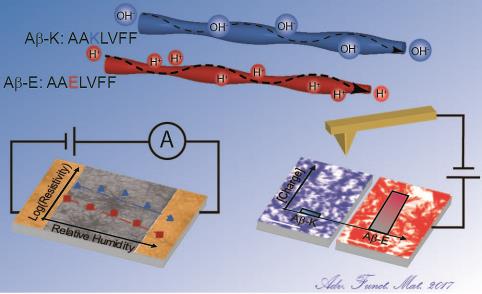
Prof. Nurit Ashkenasy - Research Group
Bio-Electronics and Bio-Sensors

Field effect transistor biosensors
The utilization of field-effect transistor (FET) devices in biosensing applications have been extensively studied in the recent years. Qualitative and quantitative understanding of the contribution of the organic layers constructed on the device gate, as well as the electrolyte media, on the behavior of the device is thus crucial. In a publication in ACS Nano we present an analysis of the contribution of different organic layers on the pH sensitivity, threshold voltage, and gain of a silicon-on-insulator based FET device. We have further monitored how these properties change as function of the electrolyte ionic strength. Our results clearly show that in addition to electrostatic effects, changes in the amphoteric nature of the surface also affect the device threshold voltage. We have thus shown for the first time that apart from the distance of an analyte from the surface, the relative contribution of charge and dipole dictates the detection sensitivity. Furthermore, we have analyzed for the first time the influence of the dielectric properties of the layers on the device gain. A reduction in the gain was found with the successive construction of each layer. These results demonstrate the multilevel influence of organic layers on the behavior of the FET devices.
The detailed understanding of device performance has led us to develop a novel method for affecting the bio-FET recognition signal post analyte binding; providing a tool for signal amplification. To achieve this goal we introduced an excess amount of charge and dipole, using functionalized gold colloids, by a sandwich type secondary antibody binding protocol. This enabled us to manipulate the signal in a selective manner. (See our publication in Electroanalysis).

